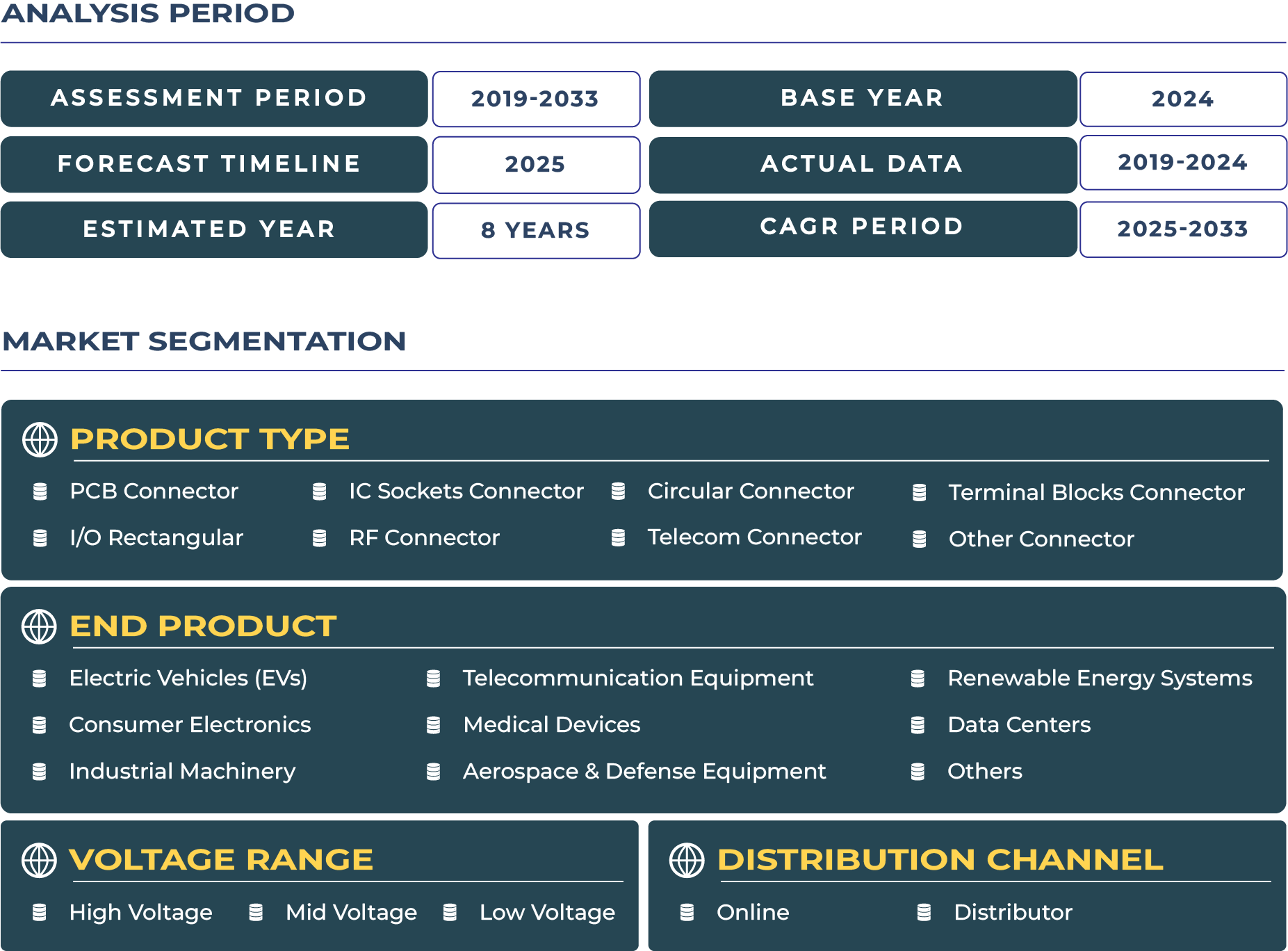New Zealand Connector Market Outlook
Precision Biometric & Medical Connectors Powering New Zealand’s Aging Society Tech Revolution
New Zealand’s healthcare and personal-care industries are undergoing a quiet revolution—driven by an aging population and innovation-fueled medtech startups. This transformation is being enabled by connector innovation focused on magnetic, safe-detach designs and AI-based simulation testing. The connector market in New Zealand is estimated to reach USD 72 million by 2033. This growth trajectory underscores call for highly reliable, detachable connectors that enhance patient safety, device portability, and seamless maintenance.
Biometric & Personal-Care Emergence Drives Magnetic Connector Adoption
New Zealand’s rapid adoption of wearable biometric devices—spanning elder-care, remote patient monitoring, and at-home diagnostics—demands connectors optimized for magnetic safety and usability. Magnetic IC socket connectors in consumer-grade heart-rate monitors, glucose sensors, or smart inhalers offer tool-free attachment and reduce risk of breakage during daily activities. The shift to such connectors is reflected in strong uptake of low-profile board-to-board magnetic solutions, as local hospitals and assisted-living facilities transition to remote care models. These devices rely on secure yet effortless connectivity—demonstrating how connector ecosystems are reshaping healthcare delivery in New Zealand.
Growth Catalysts and Constraints: Test Equipment & Biometric Demand vs. Manufacturing Strain
The connector sector’s momentum is reinforced by two critical drivers. First, expanded use of test & measurement equipment in labs and clinics—especially those analyzing wearable biometrics—has driven RF connector demand by 28% year-over-year. Second, government-funded initiatives to enhance elder-care services have prompted deployment of smart medical devices featuring magnetic connectors in assisted-living communities. These efforts have raised the profile of the connector market in public procurement strategies.
However, growth is constrained by manufacturing and logistics limitations. New Zealand’s connector ecosystem faces a shortage of precision assembly labor; small production runs struggle to meet global quality tolerances, raising rework rates by up to 15% in board-to-board and RF connectors. Additionally, the cost of importing precision connectors—often from Asia—adds premium transport charges due to New Zealand’s remoteness. This cost pressure has encouraged OEMs to explore local assembly partnerships or vertical integration to buffer supply-chain volatility.
Magnetic Detachability & AI-Enabled CAD/EDA Integration
Two strategic trends are emerging in the New Zealand connector sector:
- Magnetic Safe-Detach Connectors: Magnetic board-to-board and circular connectors are gaining traction in medtech and assistive devices.
- AI-Enabled CAD/EDA Connector Design: Recognizing the precision demands of biometric interfaces, medtech OEMs are licensing AI-based CAD tools for connector simulation. This shift signals how AI and simulation tools are accelerating connector innovation while minimizing time to market.
There are two key opportunities to exploit:
- Safe-Detach MRI and Home-Care Connectors: Suppliers can engineer detachable connectors suited for MRI-safe cables and sensitive monitoring gear—designs that focus on patient comfort, EMI resilience, and regulatory compliance.
- Licensed AI CAD Tools for Connector SMEs: AI-powered design platforms can empower local developers to simulate enclosure fit, magnetic detachment thresholds, and lifecycle endurance before entering mass production.
Government Influence: Regulation Elevates Connector Safety Standards
New Zealand Health’s medical device safety framework was updated in 2024 to require safe-detach magnetic connectors in Class II medical devices used by elderly or mobility-impaired patients. These regulations define pull-force specifications, IEC compliance testing, and traceability protocols. Additionally, MBIE’s Tech for Aging initiative promotes AI-enabled device certification, indirectly supporting connector simulation licensing. This regulatory environment accelerates connector adoption across the medtech and personal-care connector ecosystem.
Aging Demographics and Economic Support Bolster Connector Sector
Two macroeconomic indicators are shaping the connector landscape:
- Aging Population Profile: With individuals aged 65+ comprising 18% of the population—and projected to reach 22% by 2028—demand for assistive devices with safe and easy connector interfaces continues to grow.
- GDP Support and Health Infrastructure: New Zealand’s healthcare sector received NZD 3 billion in capital investment between 2023–25, with connectors representing a proportionate share. Strong healthcare spending supports connector deployment in mobile clinics, wearable telemetry, and at-home devices.
In parallel, the country’s lean urban footprint—87% urbanization—and advanced connectivity infrastructure drive demand for compact, reliable connectors used in both urban and remote applications. These underlying factors help reinforce market growth despite production constraints.







